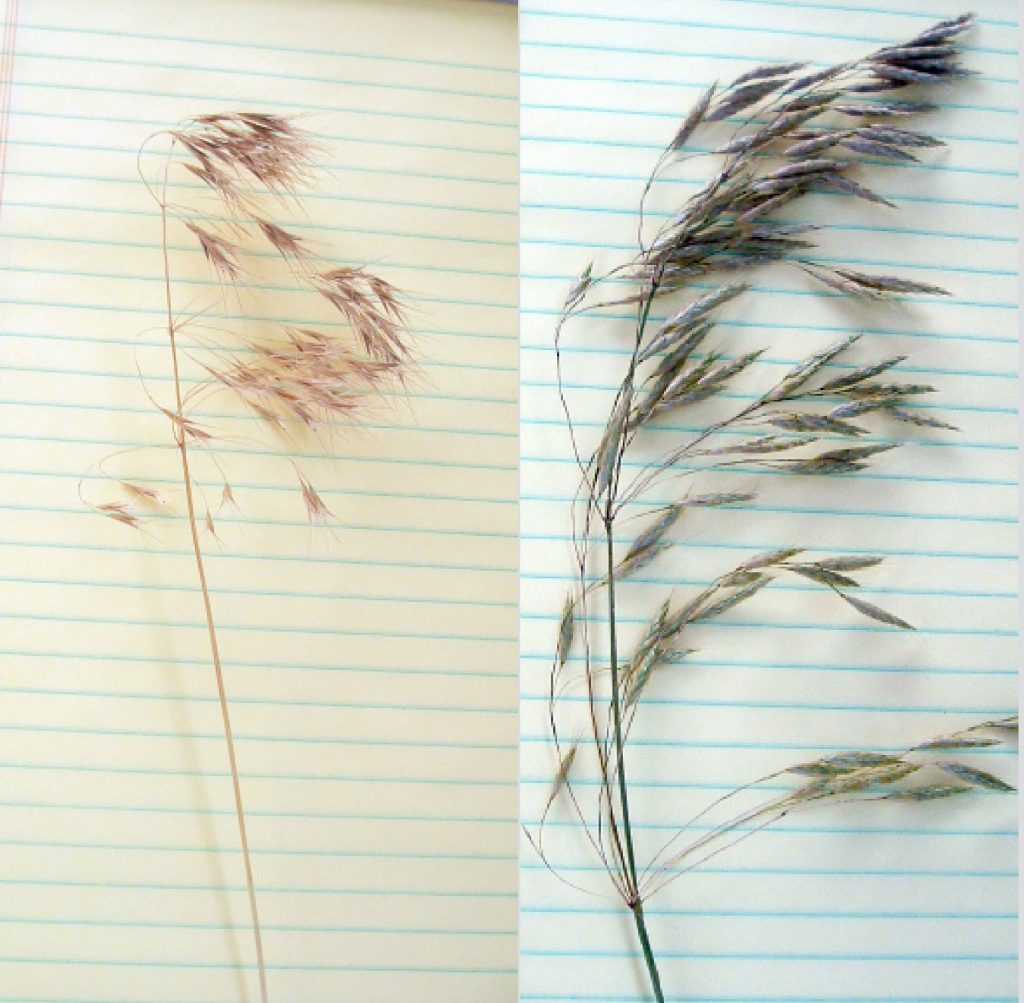
Features
Agronomy
Weeds
How to identify the difference between Japanese and downy brome
Japanese brome (Bromus japonicas) exists as a winter annual or summer annual grass weed in the Canadian Prairies.
June 8, 2017 By Bob Blackshaw
 Downy brome (Bromus tectorum) has a dropping head and longer awns (right); Japanese brome (Bromus japonicas) has short awns and a more upright head (left). Japanese brome (Bromus japonicas) exists as a winter annual or summer annual grass weed in the Canadian Prairies.
Downy brome (Bromus tectorum) has a dropping head and longer awns (right); Japanese brome (Bromus japonicas) has short awns and a more upright head (left). Japanese brome (Bromus japonicas) exists as a winter annual or summer annual grass weed in the Canadian Prairies.Plants typically reach a height of 80 to 100 centimetres (cm). Stems are bent at the base and nodes are swollen and brownish in colour. Leaf blades are flat, measuring 0.25 to 0.5 cm wide and 15 to 20 cm long, and covered in soft hairs. Seed heads have long branches and pedicels, usually droop to one side when mature, and each branch has one to five spikelets. Japanese brome seed has little dormancy and usually doesn’t persist in the soil beyond two to three years. Optimum germination occurs at soil temperatures of 5 C to 20 C, resulting in peak emergence in September-October and April-May.
Japanese brome can easily be confused with downy brome (Bromus tectorum) but there are some distinguishing characteristics between the two. Downy brome has more open, drooping panicles with 20 to 30 millimetre (mm) long spikelets having 12 to 17 mm straight awns. Japanese brome spikelets are shorter (10 to 20 mm) and have shorter (8 to 10 mm) curved awns. Downy brome seed is a grey to reddish colour at maturity, while Japanese brome seed is tan coloured. Indeed, the entire downy brome plant is purplish-reddish at maturity, while Japanese brome is more of a pale tan colour. Japanese brome is less common in southern Alberta and tends to grow in wetter sites compared to downy brome.
– Reprinted with permission from Farming Smarter.